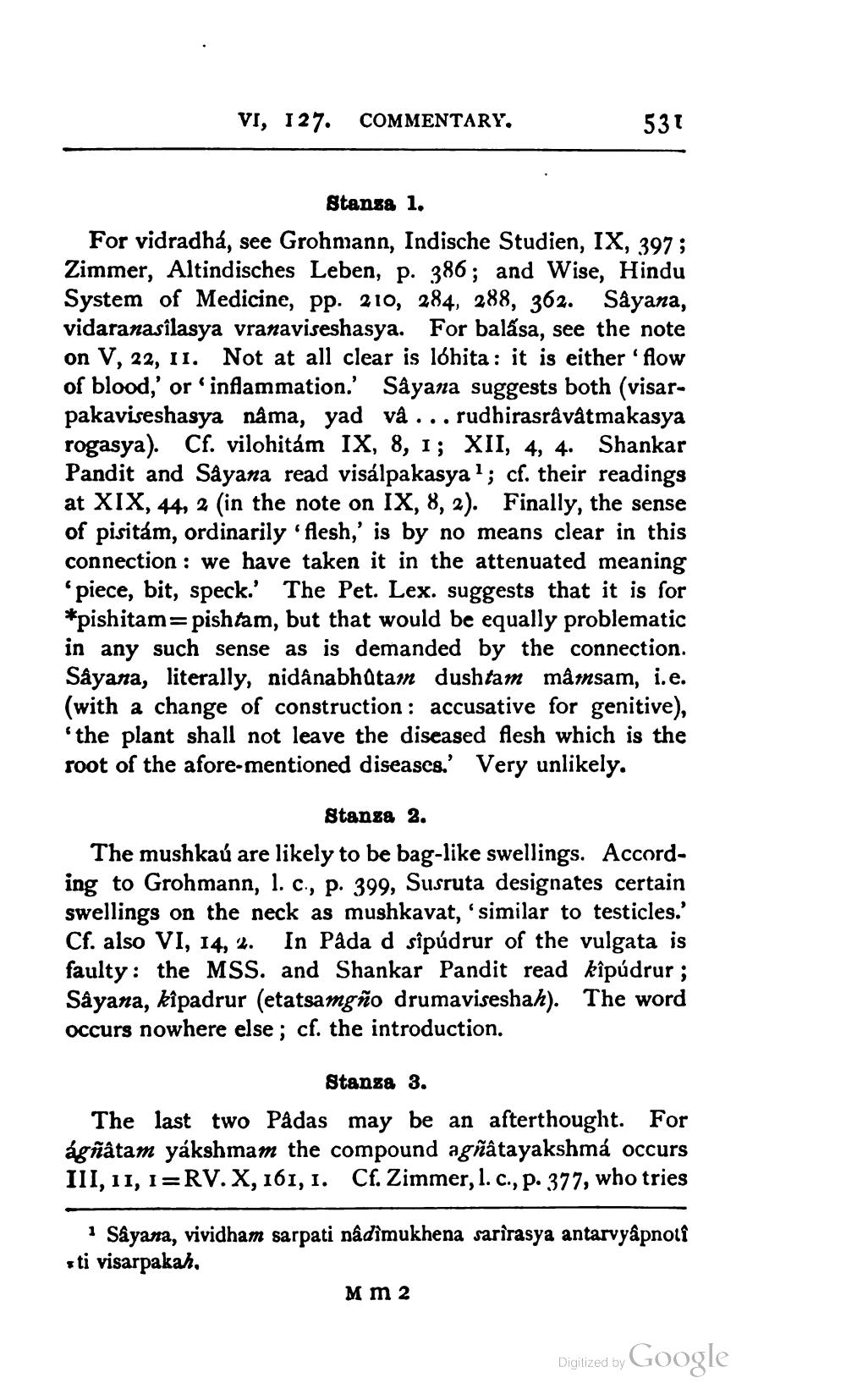________________
VI, 127. COMMENTARY.
Stanza 1.
For vidradhá, see Grohmann, Indische Studien, IX, 397; Zimmer, Altindisches Leben, p. 386; and Wise, Hindu System of Medicine, pp. 210, 284, 288, 362. Sâyana, vidaranasilasya vranaviseshasya. For balása, see the note on V, 22, 11. Not at all clear is lóhita: it is either 'flow of blood,' or 'inflammation.' Sâyana suggests both (visarpakaviseshasya nâma, yad vâ... rudhirasrâvâtmakasya rogasya). Cf. vilohitám IX, 8, 1; XII, 4, 4. Shankar Pandit and Sâyana read visálpakasya1; cf. their readings at XIX, 44, 2 (in the note on IX, 8, 2). Finally, the sense of pisitám, ordinarily 'flesh,' is by no means clear in this connection: we have taken it in the attenuated meaning 'piece, bit, speck.' The Pet. Lex. suggests that it is for *pishitam=pishtam, but that would be equally problematic in any such sense as is demanded by the connection. Sâyana, literally, nidânabhûtam dushtam mâmsam, i.e. (with a change of construction: accusative for genitive), 'the plant shall not leave the diseased flesh which is the root of the afore-mentioned diseases.' Very unlikely.
531
Stanza 2.
The mushkaú are likely to be bag-like swellings. According to Grohmann, 1. c., p. 399, Susruta designates certain swellings on the neck as mushkavat, 'similar to testicles.' Cf. also VI, 14, 2. In Pâda d sîpúdrur of the vulgata is faulty: the MSS. and Shankar Pandit read kîpúdrur; Sâyana, kîpadrur (etatsamgño drumaviseshah). The word occurs nowhere else; cf. the introduction.
Stanza 3.
The last two Pâdas may be an afterthought. For ágñâtam yakshmam the compound agñâtayakshmá occurs III, 11, 1=RV. X, 161, 1. Cf. Zimmer, l. c., p. 377, who tries
1 Sâyana, vividham sarpati nâdîmukhena sarirasya antarvyâpnotî ti visarpakah.
M m 2
Digitized by
Google




